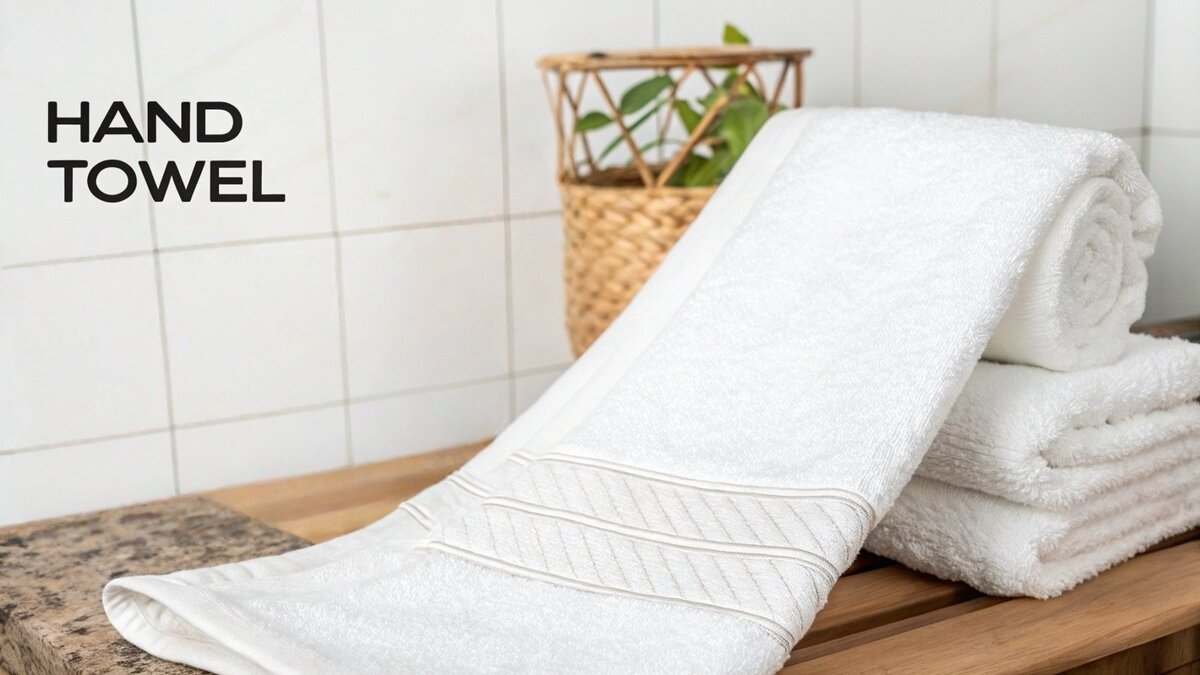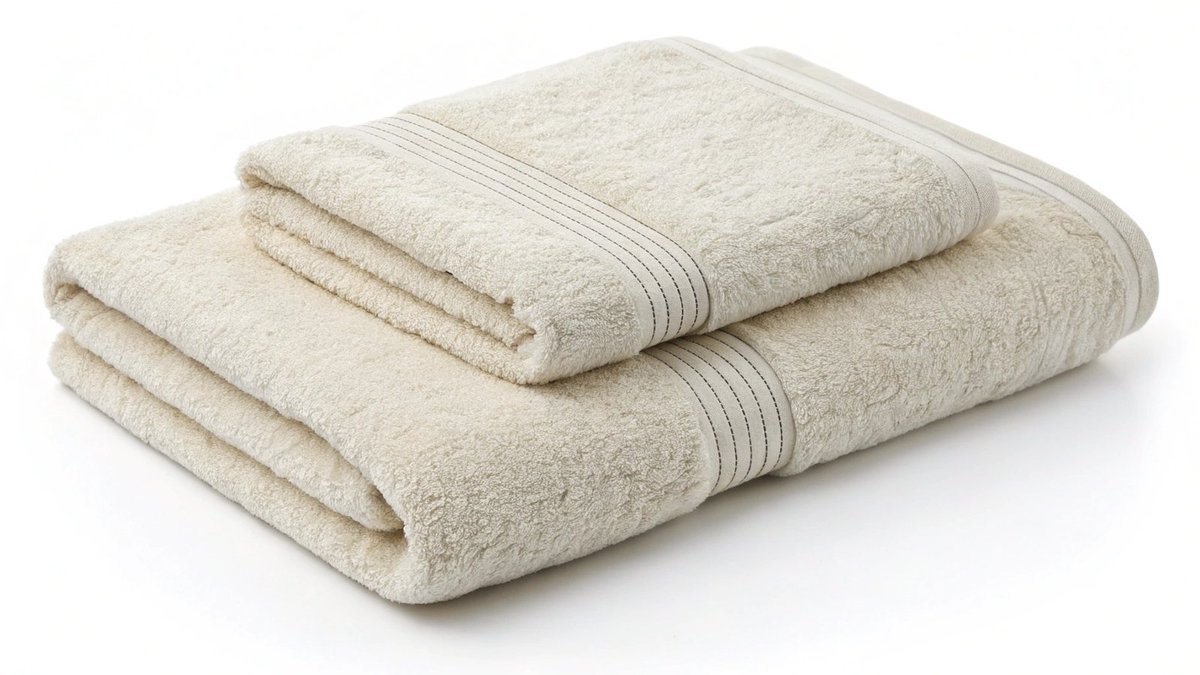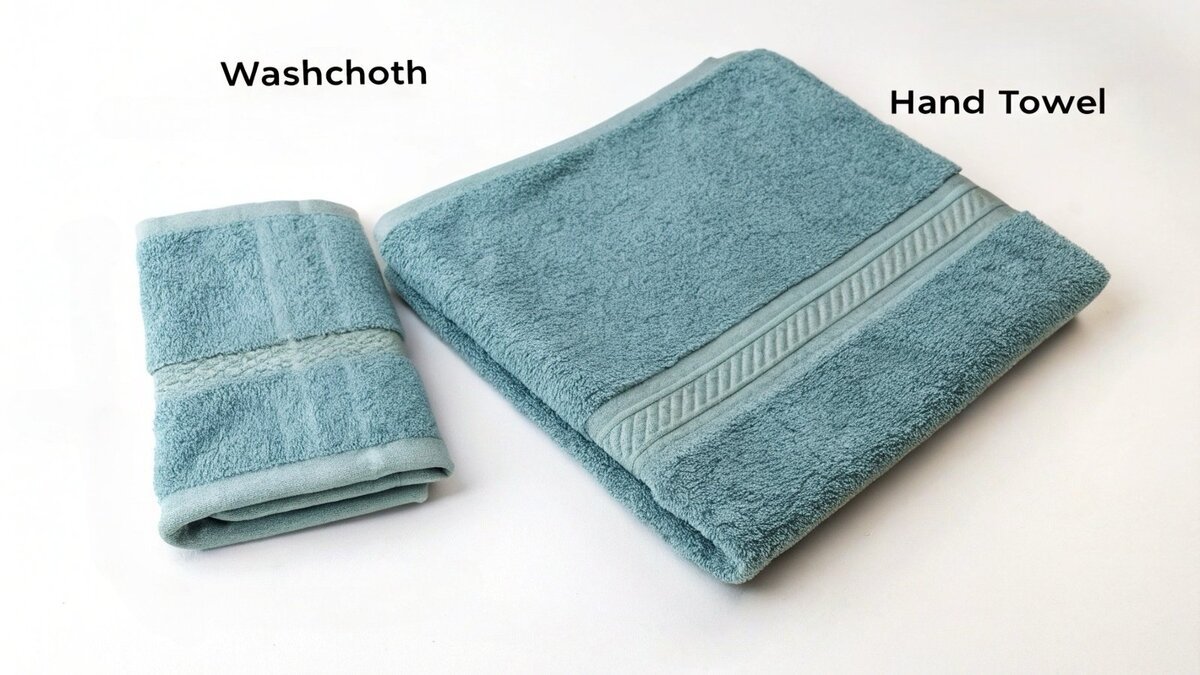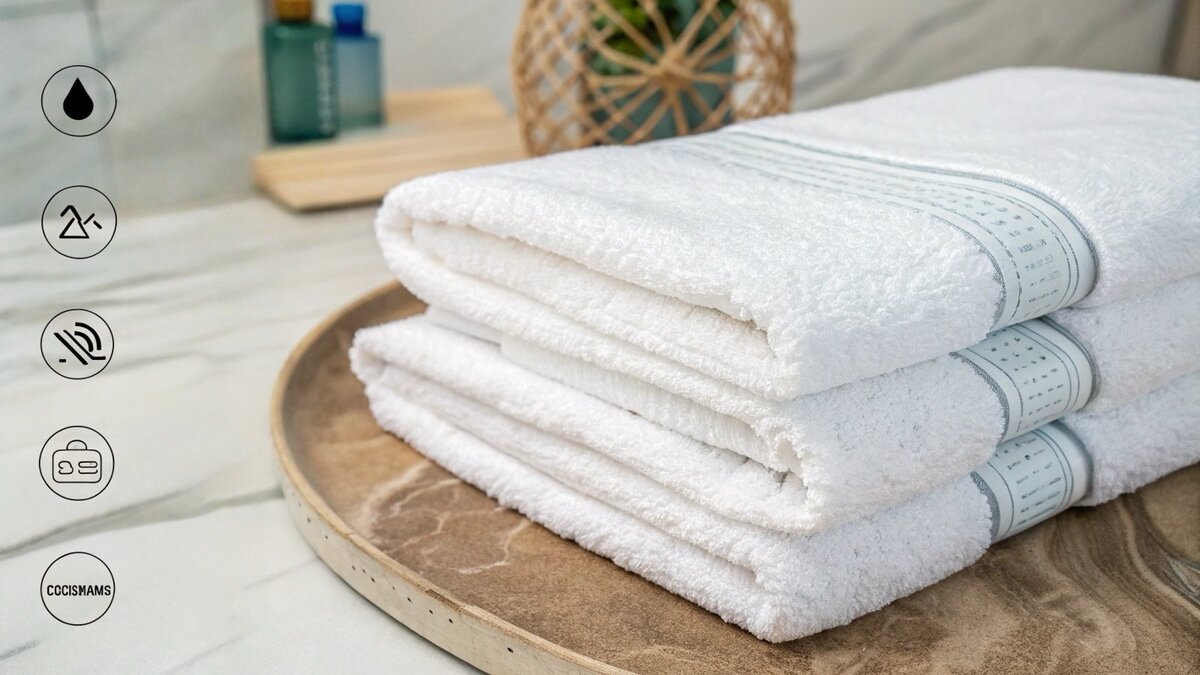Choosing the wrong hand towel is frustrating and wasteful. They feel flimsy, don’t dry your hands, and fall apart after a few washes. I’ll help you pick the right one.
Before buying a hand towel, focus on material, weight, and size. Cotton is best for its high absorbency and durability. A higher weight, measured in GSM, means a plusher towel. Finally, ensure the size fits your space and meets your needs, whether in a kitchen or bathroom.
Understanding these basics is the first step. But to make a truly smart purchase, especially if you’re buying for a business, you need to know exactly how a hand towel differs from other common towels. Getting the details right saves you money and ensures you get a product that performs exactly as you need it to. Let’s break it down so you can buy with confidence.
What is a hand towel?
You see the term "hand towel" used everywhere, but it can feel vague. This confusion makes it hard to buy the right product. Let me define it for you.
A hand towel is a small, absorbent cloth made for drying your hands. It is usually made of cotton and is bigger than a washcloth but smaller than a bath towel. It’s designed for heavy use in bathrooms and kitchens, where durability matters most.
A hand towel is a workhorse. Its main job is to provide a hygienic and convenient way to dry your hands. You’ll find them hanging next to a bathroom sink, on a kitchen cabinet handle, or neatly folded in a powder room. The material is critical. At TowelTrend, we almost always recommend cotton for hand towels because it’s naturally absorbent, soft, and strong enough to handle constant use and frequent washing. I remember working with a new boutique hotel client who wanted to improve their guest experience. We switched their generic, thin towels with our 600 GSM premium cotton hand towels. It was a small change, but it instantly made their bathrooms feel more luxurious. It’s often the first thing a guest touches, and that quality makes a lasting impression.
Key Characteristics of a Hand Towel
| Feature | Description | Common Use |
|---|---|---|
| Material | Usually 100% cotton for absorbency and durability. | Bathrooms, kitchens, powder rooms. |
| Size | Typically ranges from 16×28 to 18×32 inches. | Drying hands after washing. |
| Function | Hygiene and quick drying. | High-traffic areas. |
| Durability | Made to withstand frequent machine washing. | Daily use in homes or businesses. |
What’s the difference between a washcloth and a hand towel?
It’s easy to mix up washcloths and hand towels. But using the wrong one is either unhygienic or just doesn’t work well. I’ll explain the clear differences.
The main differences are size and purpose. A washcloth is small, about 12×12 inches, and is used for washing your face or body. A hand towel is larger, around 16×30 inches, and is only for drying your hands after you wash them.
Let’s dive deeper into function. A washcloth is a personal care tool. You use it with soap and water to scrub your skin, remove makeup, or exfoliate. Because of this, some washcloths have a more textured weave. A hand towel, on the other hand, is for hygiene after washing. You should only use it on clean hands. Using a washcloth to dry your hands is ineffective because it’s too small and gets soaked quickly. Using a hand towel to wash your face can be too harsh and unhygienic. From a manufacturing perspective, these are two very different products. When we produce an order for a client, the specs are distinct. For a washcloth, the focus might be on a durable, low-pile terry loop. For a hand towel, we prioritize a plusher, denser loop for maximum water absorption and a soft feel.
Washcloth vs. Hand Towel
| Feature | Washcloth | Hand Towel |
|---|---|---|
| Primary Use | Washing face and body | Drying hands |
| Typical Size | 12 x 12 inches | 16 x 30 inches |
| Texture | Can be more textured for exfoliation | Soft and plush for absorbency |
| Placement | In the shower, or by the sink for face washing | Next to the sink for hand drying |
What’s the difference between a hand towel and a guest towel?
You need towels for visitors, but the term "guest towel" can be confusing. You wonder if they are truly different or just another name. Let’s clear this up right now.
A guest towel is often a type of hand towel, but it is set aside specifically for visitors. It can be a standard hand towel, a smaller "fingertip" towel, or even disposable. The key is that it is fresh and clean for each guest.
Think of "guest towel" as a job title, not a specific type of towel. The goal is to offer visitors a clean, unused towel for drying their hands. This shows good hospitality. You can simply use one of your regular hand towels for this, or you can buy towels specifically for this purpose. These are often called "fingertip towels," which are slightly smaller than hand towels and often more decorative. They might feature embroidery, special patterns, or unique colors to match the bathroom’s style. For our hotel and spa clients, the guest towel is a key part of their brand. They need a towel that looks and feels premium but can also survive daily industrial laundering. We often produce beautiful hand towels with an embroidered logo, which serves both a practical and branding purpose for them. It’s an easy way to make their guests feel cared for.
When to Use a Guest Towel
You don’t need guest towels for your family’s daily use. Their purpose is specific.
- For visitors: When you have company over, putting out a fresh stack of guest towels in the powder room is a thoughtful touch.
- For special occasions: During holidays or parties, decorative guest towels can add to the festive atmosphere.
- In business: Hotels, spas, and even corporate offices use them to provide a hygienic and upscale experience.
What to look for when buying hand towels?
You need new hand towels, but there are too many options. You risk wasting money on towels that look good but don’t absorb water or last. Here is my simple checklist.
Focus on four things: material, weight (GSM), construction, and size. Cotton is the best material for absorbency. A higher GSM means a plusher towel. Also, look for strong hems for durability and choose a size that fits your space.
Let’s break these down so you can choose like a pro. This is the same advice I give our private-label clients when they are developing a new product line.
1. Material Matters Most
Cotton is king for hand towels. It’s soft, absorbent, and durable. For an extra touch of quality, look for long-staple cotton like Turkish or Egyptian cotton, which have longer fibers that create a smoother, stronger yarn. Also, check for certifications like OEKO-TEX®, which ensures the towel is free from harmful chemicals. This is a non-negotiable for many of our clients who sell to health-conscious consumers.
2. Understand Towel Weight (GSM)
GSM stands for Grams per Square Meter. It tells you the density and plushness of the towel.
| GSM Range | Feel & Performance | Best For |
|---|---|---|
| 300-400 GSM | Lightweight, thin, dries very quickly. | Kitchen use, gym bags, or budget needs. |
| 400-600 GSM | Medium weight, good absorbency and durability. | Everyday home and commercial use. This is the sweet spot. |
| 600-900 GSM | Heavy, very plush, super absorbent, feels luxurious. | Upscale hotels, spas, and master bathrooms. |
3. Check the Construction
Look at the edges of the towel. Are the hems folded over and stitched securely? Double-stitched hems prevent fraying and help the towel last longer through many wash cycles. This is a small detail that signals quality manufacturing.
Conclusion
Choosing the right hand towel comes down to material, size, and purpose. You now have the knowledge to select a towel that is functional, durable, and perfect for your needs.











